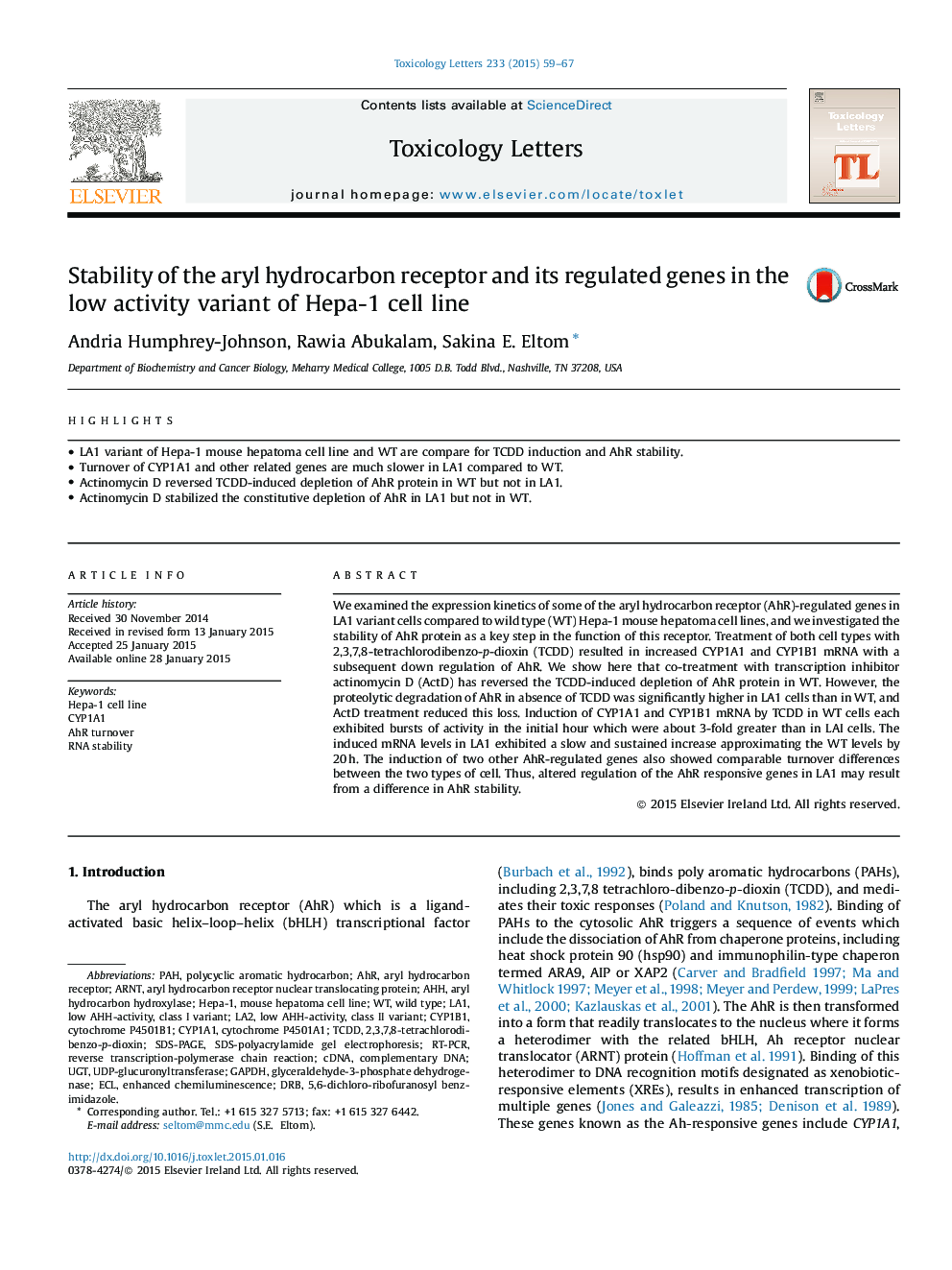| Article ID | Journal | Published Year | Pages | File Type |
|---|---|---|---|---|
| 5859899 | Toxicology Letters | 2015 | 9 Pages |
Abstract
We examined the expression kinetics of some of the aryl hydrocarbon receptor (AhR)-regulated genes in LA1 variant cells compared to wild type (WT) Hepa-1 mouse hepatoma cell lines, and we investigated the stability of AhR protein as a key step in the function of this receptor. Treatment of both cell types with 2,3,7,8-tetrachlorodibenzo-p-dioxin (TCDD) resulted in increased CYP1A1 and CYP1B1 mRNA with a subsequent down regulation of AhR. We show here that co-treatment with transcription inhibitor actinomycin D (ActD) has reversed the TCDD-induced depletion of AhR protein in WT. However, the proteolytic degradation of AhR in absence of TCDD was significantly higher in LA1 cells than in WT, and ActD treatment reduced this loss. Induction of CYP1A1 and CYP1B1 mRNA by TCDD in WT cells each exhibited bursts of activity in the initial hour which were about 3-fold greater than in LAI cells. The induced mRNA levels in LA1 exhibited a slow and sustained increase approximating the WT levels by 20Â h. The induction of two other AhR-regulated genes also showed comparable turnover differences between the two types of cell. Thus, altered regulation of the AhR responsive genes in LA1 may result from a difference in AhR stability.
Keywords
PAHCytochrome P4501B1Cytochrome P4501A1AHHCYP1B1ARNTDRBECLCYP1A1TCDDAHRRT-PCRGAPDHUGT2,3,7,8-Tetrachlorodibenzo-p-dioxincDNAComplementary DNAUDP-glucuronyltransferaseSDS-polyacrylamide gel electrophoresisSDS-PAGEenhanced chemiluminescenceRNA stabilitywild typeHepa-1Polycyclic aromatic hydrocarbonaryl hydrocarbon hydroxylasereverse transcription-polymerase chain reactionglyceraldehyde-3-phosphate dehydrogenasearyl hydrocarbon receptor
Related Topics
Life Sciences
Environmental Science
Health, Toxicology and Mutagenesis
Authors
Andria Humphrey-Johnson, Rawia Abukalam, Sakina E. Eltom,
